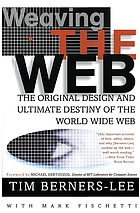
Limited and special purpose networks existed between some computers as early as the 1950s. Kent Redmond and Thomas Smith detail such in From Whirlwind to MITRE, including a test event on April 25, 1951, when SAGE radar signals were successfully sent via telephone lines to the Cambridge-based Whirlwind computer for calculation and pilot communication. However, national computer networks did not become a reality until ARPANET (Advanced Research Projects Agency Network) in 1969, the predecessor to the Internet. Two books describing the pioneering development of ARPANET are Stephen Segaller’s Nerds 2.0.1: A Brief History of the Internet and Katie Hafner and Matthew Lyon’s Where Wizards Stay Up Late: The Origins of the Internet. Hafner and Lyon devote more coverage to the beginnings of ARPANET, whereas Segaller devotes almost equal coverage to current prevalent networking companies such as CISCO, 3Com (now a Hewlett-Packard company), Microsoft, and Novell. A significant milestone—electronic mail—went hand in hand with the beginnings of the Internet, and Hafner and Lyon discuss engineer Ray Tomlinson’s first tests of e-mail in 1972. Segaller reports that at the time, ARPANET had become international, with an increase in nodes (hosts) from the original four U.S.-based academic hosts to twenty-three hosts including those in England and Norway.
In How the Web Was Born: The Story of the World Wide Web, James Gillies and Robert Cailliau reveal further details about how ARPANET first became international through the efforts of NORSAR (Norwegian Seismic Array) division, and its expansion by CERN to lay in place what became known as the World Wide Web. In Weaving the Web: The Original Design and Ultimate Destiny of the World Wide Web by Its Inventor, Tim Berners-Lee offers a detailed account of his now legendary work developing the web using TCP/IP (transmission control protocol and Internet protocol).
Recommended online resources for those interested in learning about the history of the Internet include “History of the Internet” on the Internet Society site, which features numerous articles and external links on the Internet’s history, and WWW-VL: History: Internet and W3, which contains an extensive topical and chronological collection of Internet history materials.
Andrew Blum’s recent Tubes: A Journey to the Center of the Internet offers an intriguing exploration of the hardwired infrastructure of the Internet. A three-volume set by J. R. Okin offers an expansive, readable survey of the history and societal impacts of the Internet: The Internet Revolution: The Not-for-Dummies Guide to the History, Technology, and Use of the Internet; The Information Revolution: The Not-for-Dummies Guide to the History, Technology, and Use of the World Wide Web; and The Technology Revolution: The Not-for-Dummies Guide to the Impact, Perils, and Promise of the Internet. And finally, Peter Seel’s 2012 Digital Universe: The Global Telecommunication Revolution provides a concise, well-written history of the Internet, which also treats more recent issues such as converging digital media, wireless technology, and virtual worlds.
 Weaving the Web: The Original design and ultimate destiny of the World Wide Web by its inventor by
Weaving the Web: The Original design and ultimate destiny of the World Wide Web by its inventor by